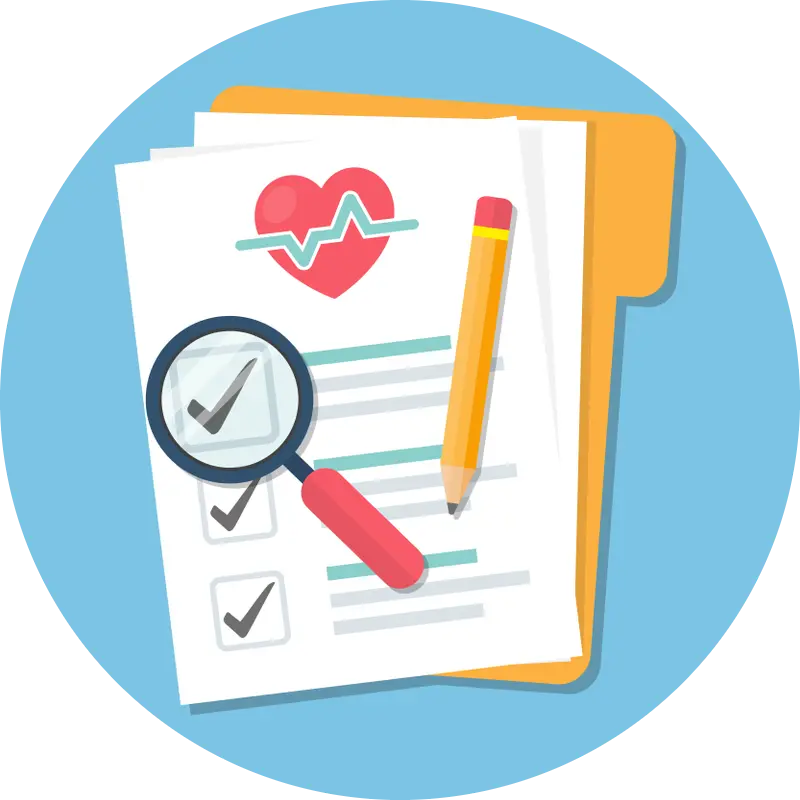If you’ve noticed any of the 10 warning signs of mold toxicity in your home, don’t ignore them. Mold toxicity can be incredibly dangerous and can lead to long-term health issues. In this article, we’ll go over the 10 warning signs of mold toxicity in your home and what steps you can take to identify and address the problem.
What is Mold Toxicity?
Mold toxicity is a medical condition caused by the presence of mold in the environment. Mold is a type of fungus that can grow indoors or outdoors and it can cause a variety of health issues for those who are exposed to it.
Causes of Mold Toxicity.
Mold toxicity can be caused by a variety of sources, including water damage, high humidity or even just poor ventilation in your home. When water damage or high humidity occurs in an enclosed space, mold spores can multiply quickly and can spread throughout your home.
Poor ventilation can also cause the spores to become trapped in your indoor air. Additionally, some types of mold produce chemicals that can be toxic to humans and animals.
In many cases, mold toxicity can be prevented by addressing the source of the issue. If you have water damage in your home, it is important to address it immediately as it can lead to more serious problems.
Proper ventilation is also key to preventing mold growth. Regularly inspect your home for signs of moisture, like musty odors or discoloration on walls and floors. If you find these signs, contact a professional to help you address the issue and prevent further growth.
10 Warning Signs of Mold Toxicity.
1. Persistent Headaches.
One of the earliest signs of mold toxicity is persistent headaches. These headaches can be mild to severe and are usually accompanied by a feeling of pressure in your head. You might also feel light-headed, experience nausea and find it difficult to concentrate or think clearly.

The headache can last for days or weeks and if left untreated, can become increasingly worse. If you find yourself experiencing frequent headaches, it may be time to check for mold in your home.
2. Frequent Sneezing.
One of the most common warning signs of mold toxicity is frequent sneezing. This may be caused by breathing in spores from the mold or it could be a sign of an allergic reaction. If you’re experiencing frequent sneezing, it’s important to look out for other signs of mold toxicity.

Mold spores can easily be inhaled, leading to potential respiratory issues. If the problem persists, it’s best to get checked out by a doctor, especially if you have any underlying allergies or asthma.
It’s also worth checking your home for any visible signs of mold growth, such as black spots on walls, musty smells or water leaks. Taking action now will help to prevent any potential health risks associated with mold exposure in the future.
3. Congestion and Runny Nose.
One of the most common symptoms of mold toxicity is congestion and a runny nose. If you’re constantly congested or you have a consistent runny nose that doesn’t improve, it’s likely due to toxic mold.
The presence of mold in your home can irritate the nasal passages and cause an inflammatory response in the body. This can lead to a stuffy nose, sinus headaches and even post-nasal drip.
If you’re experiencing congestion and a runny nose, it’s important to get your home tested for toxic mold as soon as possible.
4. Itchy, Watery Eyes.
One of the most common signs of mold toxicity is itchy, watery eyes. Mold spores are small and light, making them easily airborne. When inhaled, these spores can cause the eyes to become itchy, watery, and even red.
This is because mold particles irritate the lining of the eyes, leading to inflammation and uncomfortable symptoms. You may also experience a burning sensation, blurry vision and swollen eyelids.
In severe cases, you may even develop conjunctivitis. To prevent this issue, make sure your home is free of mold and other allergens. Additionally, wear sunglasses or goggles when working with or near mold and consider wearing a dust mask when cleaning or dealing with it.
5. Coughing and Wheezing.
If you’re experiencing frequent coughing and wheezing, it could be a sign of mold toxicity. Common symptoms of mold-induced respiratory problems include persistent coughing, wheezing, difficulty breathing and chest tightness.

This is often caused by inhaling airborne toxins released by the mold, which can irritate the lungs and airways. If your respiratory symptoms don’t improve with traditional treatments, such as medications and allergy shots, it could be a sign that there is an underlying problem caused by toxic mold.
It’s always recommended to seek medical attention if you are experiencing these symptoms. A doctor can diagnose and treat any respiratory issues that may be caused by mold toxicity.
They may also order tests to measure the level of toxins in your body or recommend an indoor air quality test to identify sources of mold in your home. If a source of mold is identified, it’s important to take the necessary steps to eliminate it to avoid further health problems.
6. Skin Irritation.
Skin irritation is another common symptom of mold toxicity. If you’ve been exposed to mold, you may experience skin rashes, hives, itching and dry patches. These rashes can appear anywhere on the body and can vary in size and severity.
If you have any of these symptoms, it’s important to take note of where the rashes appear, as this can help your doctor diagnose the cause of the irritation. In some cases, the irritation may be due to an allergy or sensitivity to the mold spores.
If you notice any redness, swelling, or itching in areas that were exposed to mold, it’s important to seek medical attention right away.
7. Fatigue.
Fatigue is one of the most common warning signs of mold toxicity. If you’re feeling fatigued even after getting plenty of rest, it may be due to mold exposure. Symptoms of fatigue include extreme tiredness and lack of energy even after a good night’s rest. You may feel an inability to focus and have difficulty remembering things or completing tasks.
Mold spores can irritate your respiratory system and your body’s natural response is to try to expel them. This can cause a range of symptoms, including difficulty breathing and exhaustion. Mold exposure can also lead to anxiety and depression, both of which can contribute to feelings of fatigue.
If you’re feeling persistently fatigued and can’t identify the source, it may be due to mold exposure.
If this is the case, it’s important to take steps to reduce your exposure as soon as possible to ensure your health and safety. Speak with a doctor or a certified mold specialist if you suspect you may be experiencing mold toxicity.
8. Joint Pain.
One of the most common signs of mold toxicity is joint pain. The severity of the pain can range from mild to severe and can affect any joint in the body. Symptoms include aching, stiffness, soreness and swelling.

Mold toxins can cause inflammation in the joints, which can make it difficult to move and even cause a limited range of motion. In severe cases, joint pain can last for days or weeks at a time.
If you are experiencing joint pain that does not go away with rest and doesn’t seem to be caused by any other condition, it may be a sign of mold toxicity. If this is the case, it’s important to identify the source of the mold so it can be removed and the problem can be addressed.
9. Memory Problems.
Memory problems are one of the warning signs of mold toxicity. These may include difficulty concentrating, confusion, forgetfulness and difficulty recalling information. These issues can be caused by toxins released into the air from mold spores, which can affect the brain’s ability to process information.
These symptoms can occur on their own or alongside other physical symptoms such as headaches, fatigue and joint pain. If you have experienced any of these memory problems it is important to take steps to reduce your exposure to mold.
This could include inspecting your home for potential sources of mold, using an air purifier or talking to a doctor about options for treating any existing mold infestations.
10. Mood Changes.
Mold toxicity can have a significant impact on your mental health. It can cause extreme mood swings, depression, anxiety and panic attacks.
Additionally, it can cause difficulty concentrating, a lack of motivation, irritability and even difficulty with social interaction. It’s important to be aware of any sudden changes in your mental state so you can address them and determine if they are related to mold toxicity. If you suspect mold toxicity is causing any of these issues, contact your doctor right away.
Treatment Options of Mold Toxicity.
When it comes to treating mold toxicity, the first step is to remove the source of the contamination from your home. Removing all traces of mold and then cleaning and sanitizing the affected areas can greatly reduce the risk of further health problems.
Once the source has been removed, you can focus on treating the symptoms associated with mold toxicity. This may include taking medications such as antihistamines or decongestants to relieve allergy-like symptoms. You may also want to consult with an allergist to determine if immunotherapy is necessary for more serious cases.
In addition to medical treatments, there are a few lifestyle changes that can help to reduce the symptoms of mold toxicity. These include avoiding triggers such as damp, musty environments and removing excess moisture from your home. Ventilating your home can also help by keeping indoor air fresh and clean.
Finally, supplementation with antioxidants and probiotics can help to strengthen your immune system and help your body to recover faster from exposure to mold toxins. It is important to consult with your doctor before starting any supplement regimen, however, as certain supplements may interact with other medications.
Complications With Mold Toxicity.
When it comes to the complications associated with mold toxicity, they can range from minor to severe, depending on the individual’s sensitivity and the length of time they’ve been exposed to the mold.
Some of the potential long-term health effects that have been linked to mold toxicity include lung problems, chronic respiratory illnesses, cognitive impairment, neurological damage, skin diseases and even some forms of cancer.
In addition to the physical health risks posed by mold toxicity, there are also psychological concerns that can arise. Those affected by mold toxicity may experience depression, anxiety, sleep disturbances and even PTSD due to the fear of being exposed to mold.
Furthermore, the financial costs associated with treating mold toxicity can be quite high. Treatment may include a combination of medications, lifestyle changes and/or home modifications. In some cases, an extensive renovation may be needed to rid a home of hazardous mold spores
Mold toxicity is a serious issue that should not be taken lightly. If you suspect you or someone you know is suffering from mold toxicity, seek medical help right away.
Prevention Tips from Mold Toxicity.
When it comes to preventing mold toxicity, the best defense is a good offense. Taking steps to protect your home from mold growth is key. Here are some prevention tips that can help keep mold away:
- Keep humidity levels in check – Mold thrives in warm, damp environments, so keep humidity levels low in your home by using a dehumidifier and running fans in wet areas like bathrooms and laundry rooms.
- Make sure there are no leaks – Leaky pipes or other water sources can provide the perfect breeding ground for mold growth, so ensure that all plumbing and fixtures are in good condition and any leaks are immediately addressed.
- Clean regularly – Dust, pet dander and other particles can accumulate over time and create an inviting environment for mold spores. Regularly cleaning surfaces with a vacuum cleaner or damp cloth can help to reduce the likelihood of mold growth.
- Fix any water damage promptly – If you notice signs of water damage, take action immediately to dry out and repair the area before mold has a chance to grow.
- Inspect your home’s ventilation system – Poor ventilation can allow moisture to build up and create an ideal environment for mold growth. Ensure your HVAC system is working properly and that vents are clean and free of debris.
By following these prevention tips, you can protect your home from mold growth and decrease the chances of experiencing mold toxicity.
Bottom Line.
Mold toxicity can be a serious health hazard and if left untreated, it can cause long-term damage to your health. Taking the time to recognize the warning signs of mold toxicity and properly treating it is essential for your well-being. If you experience any of the symptoms listed above, don’t hesitate to contact your healthcare provider for a proper diagnosis and treatment. Additionally, understanding the causes of mold toxicity and following prevention tips can help you to protect your home from future mold issues. By being proactive, you can significantly reduce the chances of experiencing the unpleasant and potentially harmful effects of mold toxicity.

 Workout
Workout
 Meditation
Meditation


 Stories
Stories


 Podcast
Podcast E-book
E-book











